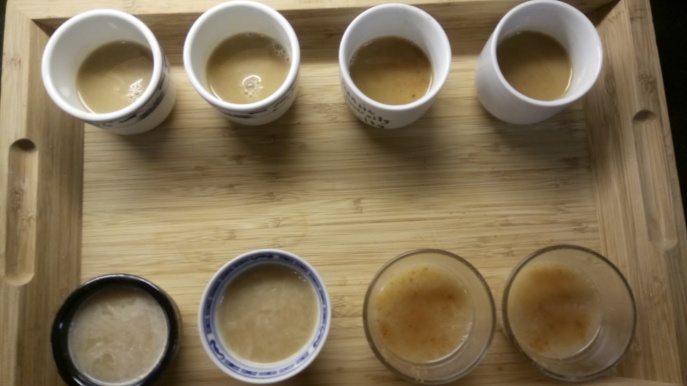I was looking through past blog articles for a recipe and discovered that in the Beans and Thickeners article I mentioned that blood was also used as an egg replacer but I’d leave that recipe to Halloween.
Well I said I’d do it so here I go.
Blood pancakes (also known as Blodpannekake, Veriohukaiset, Blodpannkaka) are a traditionally served food from all over Northern Europe. The modern blood pancake recipes I found have molasses or a savoury component such as onions added to the mixture. I couldn’t find an early English recipe for griddle fried blood cakes even though they are certainly a traditional food.
The following recipe is an unsweetened baked blood cake recipe from Forme of Cury. I’d serve this simple cake with syrup, fruit compote, or with fried onions, as is done with the above traditional pancakes. The recipe is similar to bannock, but without any rising agents.
When cooking with blood to substitute for eggs use a ratio of 1/3 cup of blood for one egg, or 1/4 cup of blood for one egg white. I used pre-clotted blood from Asian grocery, if you have fresh blood add oatmeal 1 tbsp at a time until the dough is thick not runny.
Blood can be used as a colouring agent in recipes or as the sticky ‘egg wash’ for breading fish.
Also, blood is supposed to be easy to digest.
Pie with pig’s blood
Take blode of swyne, floure, & larde idysed, salt & mele; do hit togedre. Bake hyt in a trappe wyt wyte gres. Forme of Cury, 14th century
Ingredients:
* 1 cup pigs blood, strained
* 1 cup flour
* 1/4 cup lard
* pinch of salt
* 1/4 oatmeal
* bacon fat to grease pan
Directions
1) Preheat oven to 350F
2) Mix together blood, flour, lard, salt, and oatmeal. Kneed together with hands so that batter is an even burgundy or pink throughout.
3) Grease cake or pie pan. Pour batter into pan then press it flat.
4) Bake cake for 45 minutes, until bread is dry to touch, its hard to see ‘browning’ with such a dark cake.
Confession: I used gf flour so I could try it. Its really good. Is there nothing lard can’t make delicious?



